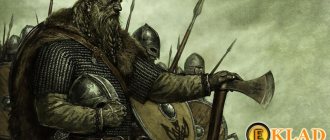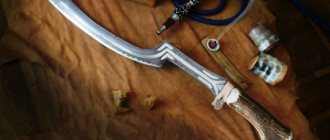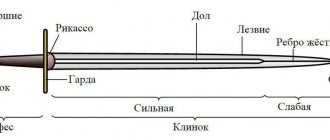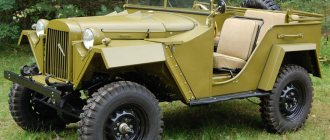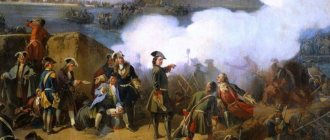The Landsknechts hated the Swiss with all their hearts. And it was mutual
Landsknechts.
The story about Landsknechts should start a little from afar, with the Swiss. The Swiss were very tough guys. Living in an inhospitable mountainous area, they constantly fought with each other, honing their fighting skills. And they were very useful to the highlanders when first the Austrians and then the Burgundians tried to seize their country.
Having given a tough rebuff to the Austrians under Morgarten in 1315, Sempach in 1386 and the Burgundians near Nancy in 1477, the Swiss realized that it would be nice to make money on what they had previously given away for free - on cuffs. From this point on, they began to be hired as infantry outside of Switzerland. Combat strength, loyalty to contract, and discipline quickly made Swiss mercenaries the most desirable allies on the battlefield.
Swiss /
Many tried to organize units similar to the Swiss in their army. But the Holy Roman Emperor Maximilian I of Habsburg was the first to succeed in this. His new army, the Landsknechts, received their baptism of fire in 1479 during the War of the Burgundian Succession. At the Battle of Guinegate, Maximilian himself went into battle in the same ranks with his soldiers. And after the victory, he hired the Swiss to share their experience and train his fighters even better. They trained it. On your own head.
Gradually, with the acquisition of combat experience, the German landsknechts became serious competitors of the Swiss, greatly outbidding them for their hatred of each other was terrible. If the Swiss and Landsknechts met in battle from different sides, a “bad war” began. This term denoted mutual cruelty, accompanied by murders and torture of those who surrendered. This behavior differed from the “good war” habitual to feudal lords, where it was preferable to take one’s classmates prisoner in order to then receive a ransom for them.
At the Battle of Lake Constance in 1499, the victorious Swiss mercilessly exterminated the fleeing Landsknechts, stabbing them in the back or driving them into the icy waters of the lake. Later, the Landsknechts began to call that dark day the “Bregenz grave.”
Maximilian I of Habsburg
A quarter of a century passed, and the Landsknechts were able to get even. At the Battle of Pavia on February 24, 1525, the Swiss, sandwiched between the bridge, which the fleeing Duke of Alençon had brought down behind him, and the Landsknechts, were brutally massacred or drowned in a stormy and cold river by former students.
But the worst thing was when the Swiss and Landsknechts were hired into the same army. Employers had to make serious efforts to separate them. Especially while relaxing at camp. If there were no serious obstacles between the Swiss and the Landsknechts in the form of other troops loyal to the employer, such as knights, then a drinking party was sure to take place, which was guaranteed to end in a massacre.
Ivar the Boneless
0
In general, when choosing the five most repulsed warriors, you can simply take five Vikings and place them in a row. Eric the Bloody Axe, for example, Gunnar Hamundarson, Ivar the Boneless... Let’s focus on Ivar. Firstly, he was disabled (most likely). Secondly, this did not stop him from being a berserker at all!
0
Berserkers are warriors who fight in a state of holy rage (possibly under mushrooms), are impervious to pain, incredibly strong, frantic and fast. It was believed that during battle the berserker was insane and his performance characteristics were much higher than that of an ordinary warrior. This is the kind of berserker Ivar was. His nickname meant either extreme mobility or a disease in which the joints become unnaturally mobile.
The nickname is truly unusual, and there are versions for every taste about what it really means. “Boneless” is deciphered both as “hateful” and “legless”; there is even a “yellow” version: they say, “bonelessness” is an elegant euphemism covering a physical defect, which is delicately designated as “incapacity for lust.” At the same time, Ivar’s legs should have been weak, but this did not stop him from cutting down his enemies. He began by coming to England to avenge the death of his father, Ragnar Lothbrok. Ivar's army marched through the country, devastating and ruining it. Ivar's goal was Northumbria - King Aella ruled there, who killed Ragnar. Ivar arrived in Northumbria on All Saints' Day, November 1, 866. “Now it’s Halloween for you guys,” he promised with feeling. Ella understood everything and decisively rushed away. He found allies and attacked York, where the Vikings had settled. The walls of the city began to crack under the onslaught of the British. At first, out of habit, Ivar began to kill everyone, then, apparently, he came to his senses. - Who is it that’s breaking in here? - he asked those around him. - The British! - So why don’t we let them in here? Let them go. The British really broke into York... and fell into the “cauldron”. Having surrounded Ella's army, Ivar defeated it, and sacrificed the king himself, breaking his ribs and pulling out his lungs through wounds in his back. His father's memory was avenged, Ivar was recognized as the greatest of the Vikings - and soon died. The person simply no longer had a goal in life.
Landsknechts were among the first to realize the benefits of firearms
The Swiss fought well with edged weapons, their dense formations bristled with pikes and halberds, and their crossbowmen were responsible for long-range combat. These warriors were quite conservative, preferring a good blow with edged weapons to all sorts of newfangled gadgets, like an arquebus or a musket.
But the Landsknechts quickly began to use arquebusiers in order to stop and thin out columns of enemy infantry. And the attacking cavalry, having received a volley from arquebuses, and a little later from more powerful and heavier muskets, lost its vigor and enthusiasm.
It was firearms that became one of the main reasons for the brutal defeat of the Swiss by the Landsknechts at the Battle of Bikkok on April 27, 1522. Having crossed open space under the fire of artillery and arquebusiers, the Swiss suffered such losses that they were unable to overcome the ditch separating them from the enemy and were defeated by Landsknechts. In this massacre, the famous commanders Arnold Winkelried and Albrecht von Stein, who commanded the Swiss, died, and with them 22 captains.
The greed of the Landsknechts is legendary
Landsknecht recruitment process/
There was a saying about the greed of the Swiss: “No money, no Swiss.” But they said about the Landsknechts that they would even serve the Devil himself if he paid them money.
Landsknechts were experts at extracting additional wages from their employers. their colonels and captains often exaggerated the number of men in their companies, pocketing the excess. At the parades, convoy boys and prostitutes were dressed as soldiers. This was so widespread that there was even a special punishment for such “mummers” - their noses were cut off. On the one hand, this was done to intimidate, on the other hand, so that such an “actor” could be easily recognized next time.
And the German landsknechts terribly did not like it when their employer delayed their payment. Of course, they could sometimes be a little patient. But if the employer was going to cheat them out of money, the discontent of the mercenaries was such that it could frighten even the emperors. For example, in 1530, when rumors spread during the Augsburg Reichstag that the Landsknechts' pay had been lost by one of the courtiers, the outraged soldiers forced the Emperor Charles V himself to pay himself all the money owed to them.
An important part of a mercenary's income was the robbery of the population. Often employers were forced to take cities only because otherwise unpaid landsknechts could rebel. It even came to open skirmishes. For example, in Picardy in 1554, when the French had to fight with their Landsknecht allies who decided to plunder the already surrendered city of Disnan.
But the most significant story happened two years earlier, in 1552, during the capture of the city of Yvois. The Constable of France, Anne de Montmorency, who commanded the gendarmes, that is, the French knightly cavalry, decided to prevent the Landsknecht allies from plundering the city. The mercenaries pointedly ignored the order, burst into the city and began looting. The gendarmes who tried to stop the pogrom were attacked by angry Landsknechts. A gendarmerie cornet was killed, and the constable's son almost died when his hat was shot through. Shooting from the windows and doors of already occupied houses, the mercenaries forced the gendarmes to flee and continued to plunder the city.
Furious Roland
0
“Knight Roland, do not blow your horn, Charles will not come, he is forgetful of glory...” Roland is a legendary and almost literary character. They wrote “The Song of Roland” about him - and now you can’t understand where the Furious Roland himself is and where the poetic idea of him is.
0
What is known about Roland, in general, is that he was a noble knight and ally of Charlemagne. Perhaps a nephew. Medieval literature made him a model of knightly virtues long before it became mainstream and this place was taken by the above-mentioned Richard. It is not surprising, given that Roland lived much earlier than the notorious English king (he died in 778). Roland's youth is mostly pure literature, and death is already history (although literature too). It was during the return of Charlemagne from a campaign against Spain. There the emperor drove the Saracens. I didn't drive very well - I got offended and went home.
Along the way, they came across the local population (Basques), who, due to the inaccessibility of the Saracens, were capitalized. Charles’s valiant warriors plundered and burned several villages, after which, slightly cheerful, they moved on. The Basques were rightly offended and ambushed the rearguard of Charles's troops. Roland actually fell into this ambush. Next, we put aside the chronicles and take on “The Song of Roland.” The Basques magically turn into Saracens there, so that it won’t be so offensive. Well, naturally - if an epic hero dies at the hands of angry local spearmen, this somehow reduces the degree of tragedy. Therefore, in the “Song” there are Saracens. And Roland falls into an ambush for a reason, but because of the betrayal of Charles’s associate Count Ganelon. The “hit” occurred in the Roncesvalles Gorge. It was there that Roland found himself cut off from Charles's main army and withstood the battle with the enemy. That is, he held out for some time, and very heroically. Categorically refusing to blow the horn and call Charlemagne for help: they say, I can handle it myself. And he fought bravely in the front ranks, brushing aside his advisers. In general, this did not lead to anything good. When Roland succumbed to persuasion and blew the horn, it was already too late. Karl simply didn’t have time... But how much literature grew out of this battle!
Landsknechts practiced magic (sometimes black)
Landsknecht and the devil.
Magic and witchcraft were an organic part of the consciousness of medieval man. It is quite obvious that the mercenaries did not shy away from using it. For example, to protect against death or injury, as well as to attract good luck in battle, the Landsknechts used various amulets.
Popular talismans were wolf eyes, ropes of a hanged man, wings and the blood of bats. But the most desired amulet was a shirt woven by a virgin on the night before Christmas. To protect against injury, they used the following ritual: they wrote spells on a piece of paper, then baptized a bottle of wine, then swallowed the piece of paper, washing it down from the bottle. The church turned a blind eye to all these magical rituals.
However, the authoritative treatise on demonology at that time, “The Hammer of the Witches,” authored by the monk of the Dominican Order Heinrich Kramer, also describes the real satanic rituals that the mercenaries used.
For example, shooters who wanted to be supernaturally accurate entered into an agreement with the Devil, shooting at inverted figures of Christ as many times as they wanted to kill people in battle. And in order to avoid injury, the mercenaries cut off the part of the body that they wanted to protect from the crucifix.
Despite the condemnation by the church, the military authorities were quite loyal to witchcraft. Hans von Grimmelshausen, a writer and participant in the Thirty Years' War, describes the following situation: a profos (military executioner) who had made a pact with the Devil used spells to create the illusion of an entire detachment of cavalry, or to make himself and others invulnerable to weapons. And he had nothing to do with it.
Landsknechts carried with them entire armies of regimental prostitutes
Of course, the fate of women in the city captured by the Landsknechts was terrible. But during the campaign, the army of mercenaries was accompanied by canteens - women who perfectly learned to coexist with brave warriors.
A decent convoy will form next to any foot army. And in this convoy there are many people who make the soldier’s life easier during the campaign. These are servants, artisans, merchants, and prostitutes. Marketers were originally called merchants, among whom were both men and women. However, in addition to food and things, ladies sometimes sold their bodies. This is where the image of the sutler as a trader, cook and prostitute all rolled into one was formed.
It is clear that female affection was in great demand by mercenaries. In Eduard Fuchs’s book “History of Morals” there is a curious example: with one of the Landsknecht troops there were many “soldier’s girls” wearing twenty sword belts that the Landsknechts had pledged to them for sexual services.
In the same place, the author describes a situation showing how dangerous it was to be a canteen. In 1570, the commander Philip Strazzi, seeing that the army was slowed down due to the huge number of sutlers, ordered those who were more beautiful to be selected and the remaining eight hundred to be drowned in the river. Which is what was done.
But not everywhere the “soldier’s girls” were treated so cruelly. On the contrary, over time, military leaders appreciated the usefulness of sutlers, so they organized their detachments and even appointed a female commander and a special official over them - a hurenweibel. The sutlers themselves began to be divided into two categories: cantinières - those who cooked food and did the laundry, and vivandieres - those who went into battle with the soldiers, carrying wine and tobacco for the fighters, as well as robbing and finishing off wounded enemies.
One day the sutlers covered themselves with real military glory. In 1579, in southern Germany near Biberach an der Riss, Colonel Eichholtz's landsknechts were unexpectedly attacked by the Swiss during a halt and fled, after which a massacre was bound to begin. But the sutlers, led by Hurenweibel and the Bavarian Ruth Thalheim, took up arms, raised a banner and attacked the Swiss. Seeing this, the Landsknecht captain cried out: “Cowards, look around! Whores fight and you run! Damn the day I became the commander of such pathetic bastards!”
Seeing this, the fleeing soldiers turned back and drove the enemy back in a fierce battle. In this case, Hurenweibel died and Ruth was wounded. After her recovery, all the surviving soldiers passed by her, pouring handfuls of coins at the heroine's feet in gratitude for her help in the battle.
Richard the Lionheart
0
Reckless courage and talent as a commander - these things sometimes correlate, but not always. Richard was an excellent warrior, but he was not a good king. Chivalry, good-naturedness, courage - all of this in him was enough for ten. Well, just a knight of knights! The brain thing was worse. Richard was distinguished by two qualities: firstly, he was terribly stubborn, and secondly, he easily changed his decisions, suddenly and without any logic. Can you imagine the combination?
×
0
Relatively speaking, Richard would be a good captain and even a major, but not a generalissimo. In his youth, he became famous precisely for his military exploits. Well... the rebellion against his father was organized so beautifully that the father, having defeated the rebels, even shed tears, forgave and left his son the ducal chain. Then, already at the hand of daddy, Richard crushed other rebels, took the castle that was considered impregnable - he was handsome, chivalrous, adored by the common people and his mother Alienora of Aquitaine. He became a king, pushing other brothers away from the feeding trough. Everything would be fine, but Richard decided that he was, naturally, the greatest warrior the earth had ever seen, and, having become king, immediately rushed to recapture the Holy Sepulcher. Such an outstanding nature needs to be applied somewhere! He did. Richard's personal courage was beyond doubt, as was his strength. When they conquered Cyprus, which blocked the path to the Holy Land, the king fought in the front ranks. Not just in the first - he led the formation of English knights, cut into the ranks of the enemies first, and the rest followed him. However, in the same Cyprus, the British army was stuck for a whole month. And after conquering it, Richard sold the island because the crown was tight with money. In general, completely - in order to get ready for the campaign, poor England had to be almost bled dry with taxes.
Before the Saracens, Richard showed off as best he could. One day he rode forward, challenging the entire Saracen army. Predictably, he returned with a shield riddled with arrows. The king fought so bravely that after the battles he was compared to a pincushion - the enemy’s arrows were so tightly packed into him. Even when he fell ill with a fever, he was carried on a stretcher under the walls of the enemy fortress and he shot with a bow while lying down. Alas, it was not possible to recapture Jerusalem. Richard made peace with Sultan Salah ad-Din without returning the Holy Sepulcher. But the crusaders recaptured important cities, including Acre, and achieved freedom of Christian pilgrimage to their shrines. Richard, on his way home, was captured by Leopold of Bavaria. England had to pay a substantial sum to ransom the brave but somewhat stupid monarch. Upon returning to England, Richard also could not sit still. He began to fight with the French king Philip Augustus - he had his eye on English possessions in France and energetically cut off pieces of Richard's feudal power on the continent. They fought for five years, and here Richard managed to gain the upper hand and force his former ally to make certain concessions. He died after he was wounded in the shoulder with a crossbow bolt during the siege of Chalus Castle: the wound was poorly treated and the king, who so craved glory and victories, died of gangrene. However, he got the glory.
Landsknechts loved unusual weapons
Despite the increasing importance of firearms, bladed weapons still played a key role in the lives of mercenaries. Landsknechts with great skill impaled their enemies on pikes, chopped them with halberds, protazans and huge two-handed swords.
But they also had more curious things in their arsenal, for example, a Lucerne hammer. The name comes from the Swiss city of Lucerne, and, in fact, it was the Swiss who were the first to use the hammer. But the Landsknechts also gladly adopted these weapons. It was a two-meter shaft, at the end of which there was a hammer: flat or with four spikes on one side, beak-shaped on the other. They used their beak to pierce armor or pull them off a horse like a hook, and with a hammer they concussed the enemy with a blow to the helmet. Above the hammer there was a long pike tip, which could be used to pierce a unwary enemy.
Lucerne hammer.
No less interesting was the alshpis - a short spear with a disc-shaped stop. The length of such a spear was from 160 to 180 centimeters. At the same time, the tip was almost a meter long - a faceted steel spike. It was convenient to use it in dense foot formations, piercing armor with such a giant awl in poorly protected places. Later, knights also adopted it, especially often using alshpis as a tournament weapon during competitions.
But the iconic weapon of the German mercenaries was the Katzbalger or Landsknetta - most often a short, up to 80 cm, sword that the mercenaries carried with them even in peacetime. Its distinctive feature was the figure eight guard.
Its name has two versions of origin. According to the first, the word consisted of two parts - “katze” (“cat”) and “balg” (“fur”). According to this version, the sword was called that because the sheath or handle was decorated with cat skins. Consequently, the name was translated as “cat coder”. According to another, the second part came from the word “balgen” - “to fight”, and the name of the sword appeared from the phrase “to fight like cats”, that is, fiercely and in close combat.
Zulu army
The Zulus really existed and they are the most powerful warriors in the history of the 19th century who were armed, and their founder was Chucky. It all started with the fact that they met with the enemies at the intended location, it looked like the shooters of the 90s. They used throwing small spears, defended themselves with shields and were brave. They rarely lost comrades and were forced to pay tribute to them. Everyone was obliged to serve; only Chucky himself could free someone from this. Subsequently, they became more organized and even divided their troops into detachments. The strongest warriors in the world used an assegai spear with a length of half a meter and a blade, as well as a light spear. The shield was covered with thick cowhide.
